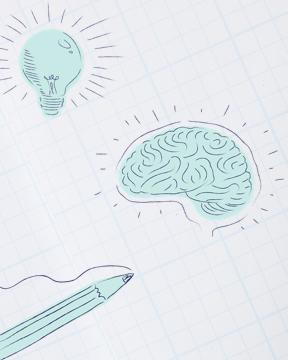
From city transportation to a hospital to the architecture of a house, “a system at its most basic is anything where the whole is greater than the sum of its parts,” says Deirdre Cerminaro, IDEO Executive Design Director and an instructor in our course Human-Centered Systems Thinking.
Here are six takeaways from our conversation with Deirdre on IDEO U’s Creative Confidence Podcast. Listen to the full episode to hear more about IDEO’s human-centered approach to systems thinking, the benefits of using this approach, real examples from IDEO’s work, and tools and mindsets you can apply today.
Listen on Spotify or Apple Podcasts
1. Human-centered systems thinking is about thinking and doing
“Human-centered systems thinking is a problem solving approach that combines the analytical tools of systems thinking with the creative methods of human centered design.” — Deirdre Cerminaro
The goal of systems thinking is ultimately to come up with solutions that are more holistic and take into account the needs of all stakeholders while also understanding the dynamics of the system. A common pitfall for systems thinkers is getting stuck in the ideation and thinking phase without getting tangible. IDEO’s human-centered approach helps you go beyond thinking to doing—using creative methods to get you to solutions you can implement.
2. Look for non-obvious stakeholders
“Understanding the needs of stakeholders, both the obvious and the unexpected, allows us to understand the constraints of the system we are designing within, and then get really creative.” — Deirdre Cerminaro
Innova Schools was started in Peru about a decade ago. The goal was to create a school system that was affordable, scaleable, and excellent to help uplift the rising middle class in Peru. When you’re designing a school, students, parents, and teachers are obvious stakeholders. The IDEO team pushed themselves to think beyond the obvious. Because schools primarily are physical places, real estate developers emerged as a stakeholder—one that had the potential to greatly influence affordability by thinking creatively about the location and size of the campuses. Identifying both the obvious and unexpected stakeholders allowed the team to understand the constraints of the system and design creative solutions within those constraints to better achieve their goal.
3. Complex challenges call for systems thinking
“Everyone benefits from thinking and acting like a systems designer, no matter what industry you're in or what your job title is, because we all face really complex challenges in our work and in the world.” — Deirdre Cerminaro
Human-centered systems thinking enables us to overcome analysis paralysis when we’re overwhelmed by the scale of a problem and it’s hard to figure out where to get started. It helps us see the interconnectedness of things, spot patterns, and develop a more holistic and human point of view so we can identify the right areas to focus our efforts. This approach is a good fit for challenges where there's a lot of stakeholders, competing incentives, or no obvious solution.
4. Constraints are your friend
“Constraints are your friend, in systems thinking and design.” — Deirdre Cerminaro
When there are too many possibilities, it can be hard to see the way forward. Constraints help you find more creative solutions and maintain focus. Deirdre uses a human-centered lens as a constraint to help her see if the work she’s doing is on the right track. She asks, “Does this serve the needs of the people in this system?”
5. Build fluency for zooming in and out
“Zooming out is stepping back to see the bigger picture and zooming in is leaning forward into the moments or the details.” — Deirdre Cerminaro
A core mindset of systems thinking is zooming in and out—switching back and forth between the big picture and the details. The biggest benefit comes from toggling between these two views seamlessly. Getting stuck in either one can derail progress.
Think of a house. The architect will take into account the needs of the people moving into the house, but they’ll also zoom out to consider how the yard affects the neighbors, how the house connects to the city power grid, and what the architectural style of the area is. They’ll zoom in to evaluate the needs of each individual. In the end, the house is designed to work not only for the family, but for all the stakeholders and the system at large.
6. Spot opportunities for impact with systems mapping
“There's no wrong way to create a systems maps.” — Deirdre Cerminaro
Systems mapping helps you learn about your system and see things from new perspectives. When it comes to creating your map, you don’t have to worry about it being perfect or looking beautiful. Deirdre says your primary goal is to deepen your understanding and come away with new questions. Systems maps help you keep all the stakeholders and moving pieces of your system in mind so you can identify areas where you can make an impact.
About the Speaker
Deirdre Cerminaro, Executive Design Director, IDEO
Deirdre is an Executive Design Director at IDEO. As a former architectural designer with a background in business and psychology, she has a knack for breaking down complex systems and finding simple levers to drive lasting change. She is passionate about bringing a human-centered lens to intractable systemic challenges, especially in education where much of her work has focused at IDEO.
Learn a holistic approach to problem solving that starts with people in our course Human-Centered Systems Thinking.
- choosing a selection results in a full page refresh
- press the space key then arrow keys to make a selection



